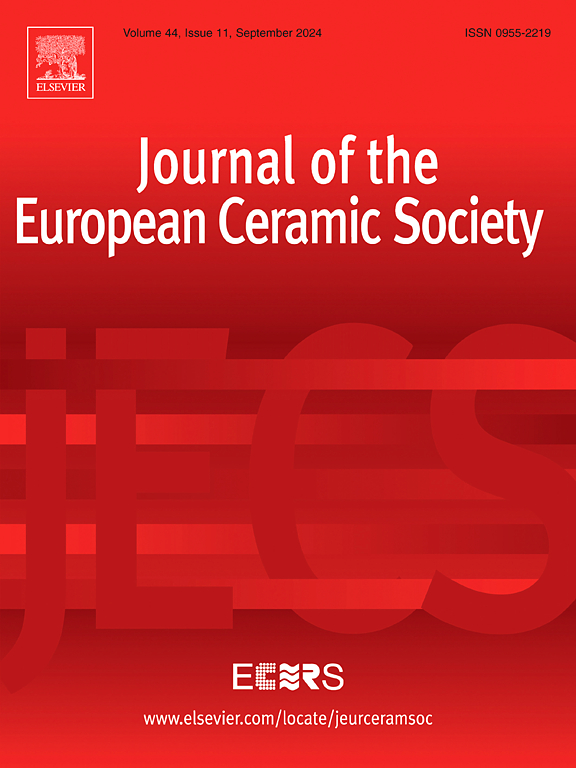Study on structural and microstructural evolution during liquid phase flash sintering of 3mol% yttria stabilized zirconia
IF 5.8
2区 材料科学
Q1 MATERIALS SCIENCE, CERAMICS
Journal of The European Ceramic Society
Pub Date : 2025-03-29
DOI:10.1016/j.jeurceramsoc.2025.117408
引用次数: 0
Abstract
The choice of additives can significantly influence the material's densification behavior, microstructure and phase evolution during flash sintering. The liquid-phase flash sintering of 3 mol% yttria-stabilized zirconia (3YSZ) has been investigated by selecting two additives: calcium aluminosilicate (CAS) and aluminosilicate (AS). Incorporating calcium aluminosilicate (CAS) into 3 mol% yttria-stabilized zirconia (3YSZ) during flash sintering facilitates liquid-phase formation, leading to enhanced densification. However, this also promotes a phase transition from tetragonal to cubic in 3YSZ, attributed to the integration of Ca²⁺ ions into the zirconia lattice. This behavior contrasts with conventional sintering methods, where such phase transformations are not observed. Conversely, aluminosilicate (AS), with its higher melting point and viscosity, results in minimal liquid-phase formation during sintering. This maintains the 3YSZ's tetragonal phase with only minor monoclinic presence. These findings underscore the critical role of additive selection in tailoring the microstructural and phase characteristics of 3YSZ, thereby influencing its properties.
求助全文
约1分钟内获得全文
求助全文
来源期刊

Journal of The European Ceramic Society
工程技术-材料科学:硅酸盐
CiteScore
10.70
自引率
12.30%
发文量
863
审稿时长
35 days
期刊介绍:
The Journal of the European Ceramic Society publishes the results of original research and reviews relating to ceramic materials. Papers of either an experimental or theoretical character will be welcomed on a fully international basis. The emphasis is on novel generic science concerning the relationships between processing, microstructure and properties of polycrystalline ceramics consolidated at high temperature. Papers may relate to any of the conventional categories of ceramic: structural, functional, traditional or composite. The central objective is to sustain a high standard of research quality by means of appropriate reviewing procedures.
 求助内容:
求助内容: 应助结果提醒方式:
应助结果提醒方式:


